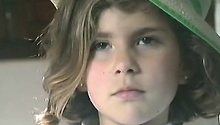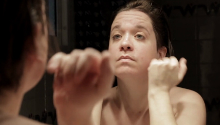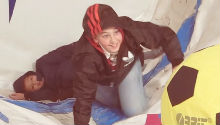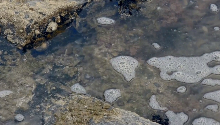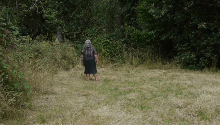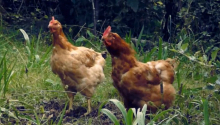Xiana Gómez-Díaz
Xiana Gómez-Díaz (Lugo, 1982). Filmmaker and visual artist. Co-founder of Walkie Talkie Films (2008), a production company specializing in auteur documentary and experimental video.
She has a PhD in Audiovisual Communication (UAB), and a degree in Audiovisual Communication (UAB) and Journalism (Southampton S.U.). Creator and producer of music (Ta!, The Adaptation Dance).
***
I work as a filmmaker and researcher. I also make music. All amateur.
I try to base my artistic projects on a foundation of research.
My audiovisual works could be divided between those that seek escape and others that seek social change. Most fall into the first category: films and clips that I make out of need, habit, and love, which tend to be based on the mystical observation of anything. I tend to see nature as a character and society as a landscape.
As regards my more humanistic/social works, recently I’ve been working on personal stories, identity, and the meaning and construction of gender. All of these themes come together in PROYECTO DIARIO [Diary project], a body of artistic research into adolescent bedroom culture that I’ve been piecing together since late 2013.
As a creator, all that matters to me is the search and production. Showing the works is only inevitable in the case of a political project.
Xiana Gómez-Díaz
Like a hiatus, an oasis of calm in the hectic lives of those of us who live—or survive—in cities of various sizes, the work of Xiana Gómez-Díaz persistently creeps up on the primeval nature that we so frequently lose sight of. Hers is a body of work that allows us to observe passing clouds and flowing waters (Encounters with entities I); to enjoy an interlude with nature for no other reason than to enjoy it per se. Recovering the look that we had when we were children but which at some point we lost, that desire to discover everything new without having to shoulder the burden of what we learned in the past. Being once more able to acquire the capacity for fascination: for strange insects (Encounters with entities II), for a leafy green wood (Encounters with entities III), for two hens pecking around in the countryside (Dúas pitas, 2009); for anything that, in other conditions, would probably go unnoticed by us. In Sotobosque (Undergrowth, 2016), for example, we are presented with the analytical observation of a slug. A succession of close-ups of the animal produces a constant sensation of estrangement, blackouts interrupt the image, and cuts confirm the passing of time that is manifested by the variations of light. Freed of the voiceovers that dominate nature documentaries, all we can do is observe with interest and retrieve the link with nature that we tend to forget.
Like a video diary of few words but overflowing with images, Vacacións (Holidays, 2013) contains scenes (some of them shown in the series Encounters with entities) of possible holidays during which human beings are freed of the usual pressures and go out into nature, enjoying the freedom offered by a few days of rest. The holiday times that take us back to our childhood, with nights outdoors, playing in the country, boat trips, summer storms and family picnics. The holiday times that give us enough leisure to leaf through an old family photo album, to examine its faces from a distance. Without feeling rushed, with no specific purpose. To notice their gestures, their faces, their movements, the way they communicate. Like in Dúas pitas, where an apparently trivial conversation between a grandmother and her granddaughter as they watch a couple of hens in the countryside becomes an interesting reflection on family ties, intergenerational communication and how different rural life is from urban. Or in Mira para aquí un momento (Look this way a moment, 2015), where a father is filming a video portrait of his preteen daughter, trying to tell her what gestures and movements she should be doing for the camera, in an attempt to portray the daughter he would like rather than the one he has.
The same interest in observing human behaviour and the ties wrought between individuals is reflected in While it spins (2014), where two kids tumble and play in a fairground attraction.
While in these works Xiana Gómez-Díaz offers a portrait of childhood and preadolescence, the central theme of Carretera de una sola dirección (One-way road, 2016) addresses the much more suppressed subject of female prostitution. The film makes its way past roadside brothels in Navarre, stopping outside these buildings and observing them closely, by both day and night, giving the spectator the sensation that the façades change completely, and that the building turns into another when the sun goes down.
Marla Jacarilla (visual artist and writer)


